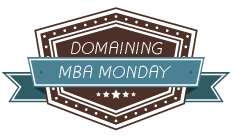
So you have a domain portfolio, and it’s growing. While it can be easy to see this as a good thing, that isn’t always the case. One of the biggest mistakes new Domainers make is buying tons of domains “assuming” that they are all assets. Not all domain names are assets, in fact most domains aren’t, most are actually liabilities and the sooner you realize this the better.
Portfolio management is an absolutely critical part of running a business in the domain space. The primary goal of portfolio management should be to determine if you are really acquiring assets, or if you’re actually just increasing your monthly renewal fees buying junk. The quicker you can take a deeper dive into your portfolio, the quicker you can change your buying habits and focus on acquiring real assets.
It’s Monday, the week is just beginning, so if you haven’t yet, take the time to get your portfolio organized. These three tips will help you get started:
- Put all of your domains in one spreadsheet – it might sound simple but many investors don’t do this. Take all of your domains, across all of the registrars you use, and put them together in one spreadsheet. Fill in your purchase price for as many of them as you can and take a long hard look at this list. You’ll be surprised at what a ten minute look at your own portfolio might feel like, if it looks like a random hodgepodge of names that you think could make a fortune if developed…think again.
- Assign a goal for each domain – you should have no random purchases, every domain you buy should be bought with a goal in mind. Make a column in your spreadsheet for goal. These goals should all be things that turn that domain into more money that what you paid for it. If you notice that your list is full of domains labeled as “Develop and Monetize” you’re probably not being realistic with yourself. Sure, you can develop and monetize a handful of domains, but you can’t do it with hundreds of names. Most of your portfolio should be domains labeled either “Flip” or “Sell” and you should have a timeline assigned to these as well. This way you can keep track of if the domains you buying are actually turning into profitable investments or if you’re just adding to what is quickly becoming a huge pile of liabilities.
- Review your portfolio at least once a quarter – to many new Domainers review their portfolio at the end of the year and then say things like “I’m going to turn this around next year!” Don’t wait a full year, review your portfolio weekly or monthly if you can but do it at least once a quarter. This is especially true if you are spending more money than you are making. If you are losing money every quarter you aren’t running a business, you’re just gambling, and unless you really love gambling you will want to course correct, and as quickly as possible.
While you might feel like the best thing you can do for your business is to buy more domains, this is rarely true. The best thing you can do for your business is to keep your portfolio organized and carefully manage your domains. I know people with 300 domains that make millions of dollars a year. I also know people with 3,000 domains that lose money every single year. Remember, it’s not about quantity, it’s about quality, and the only way to make sure you’re buying quality domains is to properly manage your portfolio.
TGIM, another exciting week awaits!



